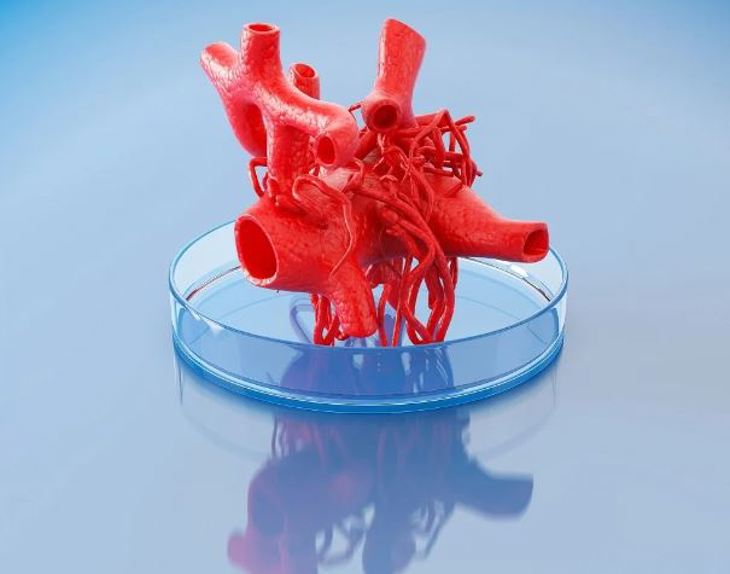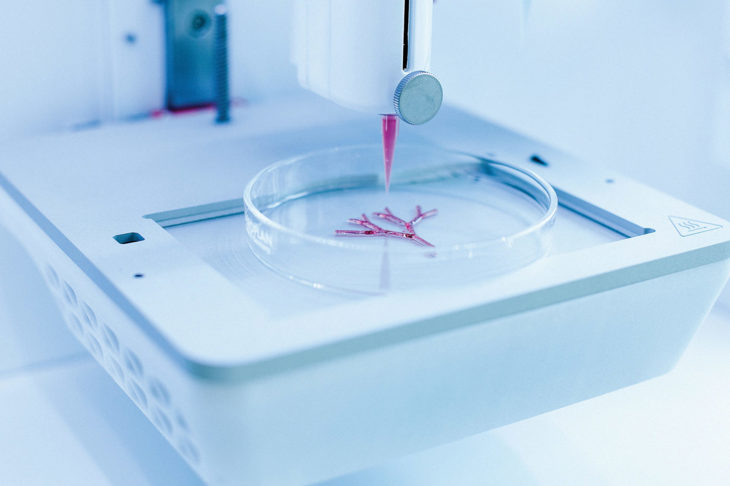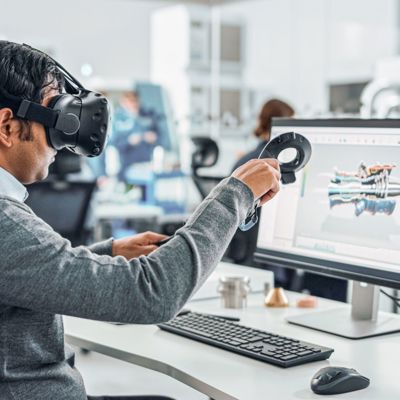Bioprinting is a revolutionary 3D printing technology that has the potential to transform the biomedical industry. This new technology can be used to create tissue, organs, and other biological components with unprecedented accuracy and precision. With bioprinting, medical researchers can create highly realistic organs and tissues that can be used for research and transplants. In addition, bioprinting can be used to produce drugs and medical devices on demand, allowing for faster and more cost-effective production. In this blog post, we will discuss how bioprinting is transforming the medical industry and the many benefits it can provide.

News Medical
What is Bioprinting?
We've all heard of 3D printing and the growing use of such technology in many industries like construction and manufacturing, but imagine if we could use 3D printing to create biological materials like organs, tissues, and even entire cells? This revolutionary technology is known as bioprinting, and it could have a profound impact on the medical industry. 3D printing works by building up layers of material in a design specified by a computer-aided design (CAD) program. This same process can be used to create materials such as living cells and other bioprintable components with the use of specially formulated bioinks. Currently, bioprinting is being used to create models of organs and tissue for research and to replace damaged body parts with artificial ones. It's an exciting technology that can provide many benefits when it becomes common practice.
Current Applications of Bioprinting
Bioprinting is beginning to be utilized in various ways across the medical industry. It is already being used to create replacement body parts, such as cartilage, tendons, and ligaments, as well as 3D models of organs and tissue for surgeons to practice on. It is also being used in the study of cancer, with scientists utilizing bioprinting to create 3D cell models of tumors that can be studied in a laboratory setting.
Bioprinting is also impacting pharmaceutical research and development. Researchers are able to use bioprinting to test drug effectiveness, as well as create 3D models of cells and organs that can be used to evaluate drug safety. This has allowed researchers to quickly and accurately assess the potential effects of certain drugs before testing them on humans.
In addition, bioprinting technology is being used to create tissue scaffolds for regenerative medicine. These tissue scaffolds can be used to regenerate new tissue in the body, such as for burns and wounds, or for organ transplantation. The ability to precisely design tissue scaffolds and inject cells into them has given researchers a better understanding of how these processes can be optimized for improved outcomes.
Overall, this technology is being utilized in different ways across the medical industry. Its precision and accuracy make it an invaluable tool for medical research and development, allowing scientists to gain deeper insights into how the human body works and how treatments can be improved.

Genetic Engineering and Biotechnology News
Future of Bioprinting
The potential of bioprinting is huge, and the future of the technology is incredibly exciting. As bioprinting continues to advance, we can expect to see new applications and technologies emerge. In the medical industry, bioprinting has the potential to revolutionize the way we treat diseases, create medical devices, and even engineer replacement organs. These practices have already shown promising results in the production of organoids, which are simplified 3D replicas of living organs. These organoids could be used to study various diseases and find effective treatments for them. In addition, bioprinted organs could eventually replace existing transplants and potentially even allow for organs to be grown from scratch in a lab setting.
The future of bioprinting also holds great potential for the development of personalized medical devices, such as prosthetic limbs. Bioprinting could also be used to create artificial tissues and organs that are designed to respond to specific drug therapies. Additionally, researchers are exploring the use of this technology to engineer living cells with specific genes that can be used to treat genetic diseases.
Bioprinting has the potential to revolutionize the medical industry and create treatments and therapies that were never before possible. With its advancements, bioprinting will continue to open new doors and revolutionize healthcare around the world.

Careers in Life Sciences
Biotech is creating the jobs of the future, from pharmaceuticals to medical devices. Real Staffing has 30+ years of industry knowledge and expertise to help guide individuals and companies to a brighter future.
Does your company work in the life sciences industry? Real Staffing has teams across the United States with the expert knowledge you need. Contact us to learn more about our services.
Are you looking for a new role in the life sciences industry? Real Staffing places talented people with top clients across the country. Contact us to learn more about opportunities in life sciences.
Banner Image: Biolife4D
